Alignment methods compare and contrast
#121
Melting Slicks


Thread Starter
I can still adjust the right side camber to the same amount as the left but my hubs are off the center line by unequal amounts with the right side being a quarter inch closer to the center line than the left side is. Using camber plates with specific offsets for the bolt reduces the chance of this happening but with the stock cams you could easily see something like that.
Bill
Bill
Bill32 why do you think the CL to hub distances need to be equal (considering the amount off relative to axle width is pretty small)? Is it just something that makes sense so you have always done it or can you fill in the gaps in my knowledge and clue me in to why this is important?
Is there math that shows if you have the wheels off from the CL that this yaw effects the aerodynamics of a formula car in a seriously negative way? Or something else?
#122
Tech Contributor
Member Since: Oct 1999
Location: Charlotte, NC (formerly Endicott, NY)
Posts: 40,089
Received 8,928 Likes
on
5,333 Posts

I don't think it makes a difference other than making sure the front and rear hubs are offset the same amount. The centerline really is the center of the track not the center of the car. A circle track person would probably want the rear hubs offset to the right along with some extra thrust to the right so the car turned to the left easier.
Bill
Bill
#123
Melting Slicks


Yes Bill this is similar to what I posted to Bill32 regarding say a formula car with a completely adjustable control arm. Strings and Laser method don't seem to care about this CL discrepancy or put their head in the sand and assume it does not happen. The fact is what Bill32 says can happen. I think the real question is should we worry about it and correct for it? Is there a reason to correct for it? Is there something about CL and hub distances being equal that is a requirement for proper vehicle dynamics or is the relationship of the tires to each other (which is what the laser and string method implys) all that is important?
Bill32 why do you think the CL to hub distances need to be equal (considering the amount off relative to axle width is pretty small)? Is it just something that makes sense so you have always done it or can you fill in the gaps in my knowledge and clue me in to why this is important?
Is there math that shows if you have the wheels off from the CL that this yaw effects the aerodynamics of a formula car in a seriously negative way? Or something else?
Bill32 why do you think the CL to hub distances need to be equal (considering the amount off relative to axle width is pretty small)? Is it just something that makes sense so you have always done it or can you fill in the gaps in my knowledge and clue me in to why this is important?
Is there math that shows if you have the wheels off from the CL that this yaw effects the aerodynamics of a formula car in a seriously negative way? Or something else?
My statement about the hub distance had to do with setting up strings using the hubs. If they are not equal, the strings will probably be off. Thus throwing your measurements off. That's all I meant about the hub thing. It's also why it's hard to do a production car using strings.
I didn't want to add much more that that to your discussion because it's a really good thread.
"I think the real question is should we worry about it and correct for it? Is there a reason to correct for it? Is there something about CL and hub distances being equal that is a requirement for proper vehicle dynamics or is the relationship of the tires to each other (which is what the laser and string method implys) all that is important?"
I wouldn't worry about it all that much.
I will say that if there's differences, the car MAY not track straight on the straights but other factors contribute, castor, corner weight, etc.
And there MAY be a difference in left and right turns. The operative word here is "May".
"Bill32 why do you think the CL to hub distances need to be equal (considering the amount off relative to axle width is pretty small)? "
Besides the small changes in the car's handling - repeatability in your suspension setup. But this has more to do with tubeframe cars be it a GT1 Corvette or an openwheel.
I'll tell you quickly how I do this then, shut up but continue reading all your comments.
The string alignment bars on these cars are very accurate, within 1/32ond and that's repeatable every time the bars go on.
On an first time setup, all the chassis pickup points are measured to the centerline, lengthwise for track and cross measured to make sure the frame is straight. And the measurements are recorded.
Then all the wishbones (A-arms) are set up with trammel bars/pins so that they are equal left to right. And these measurements are recorded.
After assembly, the string bars go on, ride height is set (obviously with the driver weight in) and all the alignment is done. Recorded on a setup sheet. That setup sheet is also used after the race to prep for the next one.
If the frame's square, rolling the car on to the scales can have as little as a 10 lb. difference (not all the time but the scale readings are always close).
The other reason is that spares can be pre adjusted, sitting in the trailer ready to go.
#124
Melting Slicks


Thread Starter
#126
Melting Slicks


#127
Safety Car


Awesome thread with a lot of detail info. After repl ctrl arm bushings and sending rack to Turn One, I am sure car will be in need of update alignment. I thought about doing it myself, but just seems like a lot of time for a once a month HPDEs. I talked to David Farmer and he is going to do mine again. He did mine 4 yrs ago and it was a huge difference at higher speeds, especially at Daytona at almost 180mph - rock solid. My only issue is it chews up my street tires as I dd car the rest of the time. I bought the Pfadt camber kit last Dec for a good deal at their GOB sale (didn't know it at the time). From what I gather from this thread, if David has my thrust, castor, camber and toe set correctly, could I adj the front camber to a more street friendly setting (with corresponding toe adj) then change back to track setting before track days? If so, would a camber gauge be good enough to make adj?
If this post seems out of line for this thread, let me know and I will start a new thread. TIA!
If this post seems out of line for this thread, let me know and I will start a new thread. TIA!
#128
Safety Car


Awesome thread with a lot of detail info. After repl ctrl arm bushings and sending rack to Turn One, I am sure car will be in need of update alignment. I thought about doing it myself, but just seems like a lot of time for a once a month HPDEs. I talked to David Farmer and he is going to do mine again. He did mine 4 yrs ago and it was a huge difference at higher speeds, especially at Daytona at almost 180mph - rock solid. My only issue is it chews up my street tires as I dd car the rest of the time. I bought the Pfadt camber kit last Dec for a good deal at their GOB sale (didn't know it at the time). From what I gather from this thread, if David has my thrust, castor, camber and toe set correctly, could I adj the front camber to a more street friendly setting (with corresponding toe adj) then change back to track setting before track days? If so, would a camber gauge be good enough to make adj?
If this post seems out of line for this thread, let me know and I will start a new thread. TIA!
If this post seems out of line for this thread, let me know and I will start a new thread. TIA!
David can set both street and track and show you what shims to change and where to adjust the toe for each setting. you will need to write it down and it takes a bit of time. I usually do it at the track before running and before going home after

#129
Tech Contributor
Member Since: Oct 1999
Location: Charlotte, NC (formerly Endicott, NY)
Posts: 40,089
Received 8,928 Likes
on
5,333 Posts

Awesome thread with a lot of detail info. After repl ctrl arm bushings and sending rack to Turn One, I am sure car will be in need of update alignment. I thought about doing it myself, but just seems like a lot of time for a once a month HPDEs. I talked to David Farmer and he is going to do mine again. He did mine 4 yrs ago and it was a huge difference at higher speeds, especially at Daytona at almost 180mph - rock solid. My only issue is it chews up my street tires as I dd car the rest of the time. I bought the Pfadt camber kit last Dec for a good deal at their GOB sale (didn't know it at the time). From what I gather from this thread, if David has my thrust, castor, camber and toe set correctly, could I adj the front camber to a more street friendly setting (with corresponding toe adj) then change back to track setting before track days? If so, would a camber gauge be good enough to make adj?
If this post seems out of line for this thread, let me know and I will start a new thread. TIA!
If this post seems out of line for this thread, let me know and I will start a new thread. TIA!
By the way I changed to the Van Steel camber plates and they fit in the notches exactly. No chance for movement. However, adjustment range is great for the track where you can get -4.5 degrees of camber but not so great for the street as the max camber you can get is about -.5 degrees.
Bill
#130
Safety Car


Yes, you could do that. The only issue I had with the Pfadt front camber plates is they were loose in the notches made for the cams. They were ~ 1/16 to narrow so tended to move around unless I torqued them down to the point that I thought I would damage the cast aluminum crossmember. The Pfadt C6Z front plates came with one hole drilled in them and a Z marked on the plate. Ir you wanted more than -1.5 degrees camber you placed the Z to the inside of the car and if you wanted less than -1.5 degrees you placed the Z to the outside. Once the car is setup you should be able to change the number of shims behind the UCAs and move the plates holding the LCAs and change camber as desired. Then all you have to do is set toe. That can be done with some toe plates and a 2 ft Sears Laser level. You could also just count turns of the tie rods between settings but I find I don't do well eyeballing how much I have turned them due to the location and lack of reference lines around them.
By the way I changed to the Van Steel camber plates and they fit in the notches exactly. No chance for movement. However, adjustment range is great for the track where you can get -4.5 degrees of camber but not so great for the street as the max camber you can get is about -.5 degrees.
Bill
By the way I changed to the Van Steel camber plates and they fit in the notches exactly. No chance for movement. However, adjustment range is great for the track where you can get -4.5 degrees of camber but not so great for the street as the max camber you can get is about -.5 degrees.
Bill
The Pfadt plates are different for base car and Z06. the ones for base cars come with notches in one side the notches denote the offset so many more to chose from and mine fit perfectly. so it depends on which kit you have. this wasn't easy to figure out with two different sets of plates commonly in use!

I have two sets of shims for the upper control arms and swap them out . one for street and one for track I keep them in four ziplock bags labled as to position LF, LR, RF & RR
your right about counting turns or flats i put lines on the tie rod end and the rack end to make sure it goes back to the original position, you coulls color code the lines for match

#131
Tech Contributor
Member Since: Oct 1999
Location: Charlotte, NC (formerly Endicott, NY)
Posts: 40,089
Received 8,928 Likes
on
5,333 Posts

Bill,
The Pfadt plates are different for base car and Z06. the ones for base cars come with notches in one side the notches denote the offset so many more to chose from and mine fit perfectly. so it depends on which kit you have. this wasn't easy to figure out with two different sets of plates commonly in use!
I have two sets of shims for the upper control arms and swap them out . one for street and one for track I keep them in four ziplock bags labled as to position LF, LR, RF & RR
your right about counting turns or flats i put lines on the tie rod end and the rack end to make sure it goes back to the original position, you coulls color code the lines for match
The Pfadt plates are different for base car and Z06. the ones for base cars come with notches in one side the notches denote the offset so many more to chose from and mine fit perfectly. so it depends on which kit you have. this wasn't easy to figure out with two different sets of plates commonly in use!

I have two sets of shims for the upper control arms and swap them out . one for street and one for track I keep them in four ziplock bags labled as to position LF, LR, RF & RR
your right about counting turns or flats i put lines on the tie rod end and the rack end to make sure it goes back to the original position, you coulls color code the lines for match

Yes, the C6Z plates are easier to adjust from max to min. All that has to be done is loosen the bolt and rotate both plates 180 degrees and retighten the bolt. Basically, the same thing can be done with the Van Steel plates but they have a little more adjustment due to having two different holes in each plate.
Bill
#132
FWIW, I have hardbar plates and they are loose as well. Not as loose as the plates described above, but just a bit narrower than the machined slots in the crossmember. What I did was rotate them until they locked out and then tighted the bolts. They have never moved.
#133
Awesome thread, very informative. I have the vansteel kit for my c5z and will be installing soon, it came with shim washers but i imagine installing/setup w shim washers is a PITA vs using the U-shaped shims. Are u guys having any issues using U-shape shims? Hold ok? Is there a set recommended ?
I am working on getting scales and hopefully Flying Miata hubstands to supplement my smartstrings. Ill post up any observations or any helpful info when i get to it.
I am working on getting scales and hopefully Flying Miata hubstands to supplement my smartstrings. Ill post up any observations or any helpful info when i get to it.
#135
Melting Slicks


Thread Starter
Awesome thread with a lot of detail info. After repl ctrl arm bushings and sending rack to Turn One, I am sure car will be in need of update alignment. I thought about doing it myself, but just seems like a lot of time for a once a month HPDEs. I talked to David Farmer and he is going to do mine again. He did mine 4 yrs ago and it was a huge difference at higher speeds, especially at Daytona at almost 180mph - rock solid. My only issue is it chews up my street tires as I dd car the rest of the time. I bought the Pfadt camber kit last Dec for a good deal at their GOB sale (didn't know it at the time). From what I gather from this thread, if David has my thrust, castor, camber and toe set correctly, could I adj the front camber to a more street friendly setting (with corresponding toe adj) then change back to track setting before track days? If so, would a camber gauge be good enough to make adj?
If this post seems out of line for this thread, let me know and I will start a new thread. TIA!
If this post seems out of line for this thread, let me know and I will start a new thread. TIA!
If I had a dual use car I would experiment with setting the street camber with a combination of LCA locked shims and UCA washers on the dogbones. Then I would pull upper shims on the dogbones to get the track camber. For the rear I would probably choose a compromised track/street rear setting. At best you get -1.7* or less. The reason for leaving the rear alone is that the camber change messes with the thrust and toe a lot so there is too much to adjust to get it perfect. I think the rear is very important because that's where you have to get the power down to be successful.
#137
Some of you had some interest in the tools I was building so here is what I have so far. These are the hub adapters built for an exact fit on the skf heavy duty hubs. I am not sure how well they fit the standard hubs, but I would think the dimensions are the same for the registers. They also register on the wheel bore. I am not sure about other wheels, but so long as the wheel bores are an exact fit on the hubs (hub centric) and as such all the way through there will be no problem. Wheels with any sort of center cap often times neck down the bore towards the outside so these will not work with those. The front and rears are specific to each end of the car and will not interchange. The camber/caster gauge can either be attached with a bolt for hands free operation or simply held against the flat surface. There are four more pieces that I still am working on. They screw into the outside and register in the bore there (behind the outside bore there is a 5/16-18 thread). Those are the pieces that will extend out and help create a rectangular box around the car with strings so each side is parallel to each other.
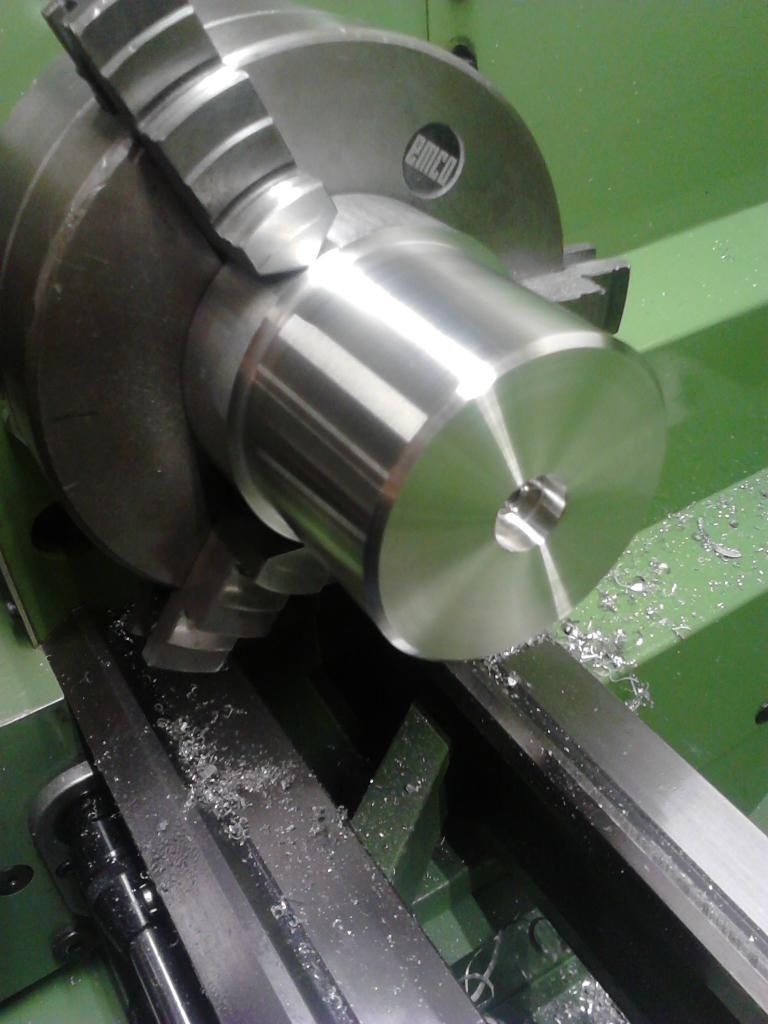

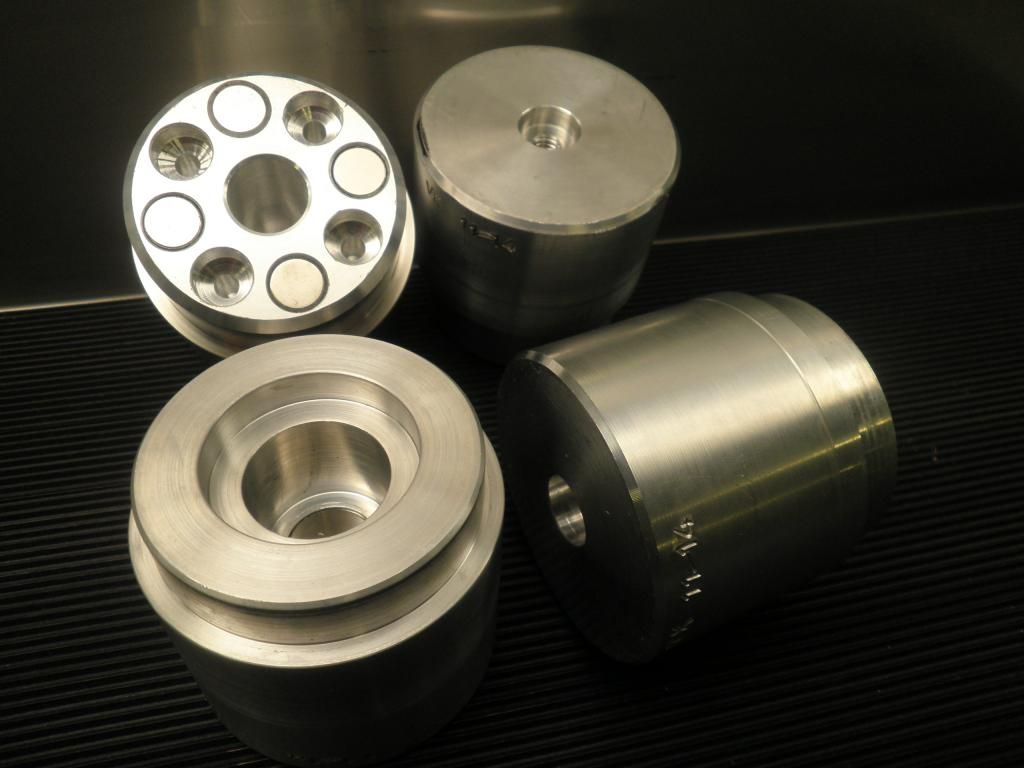
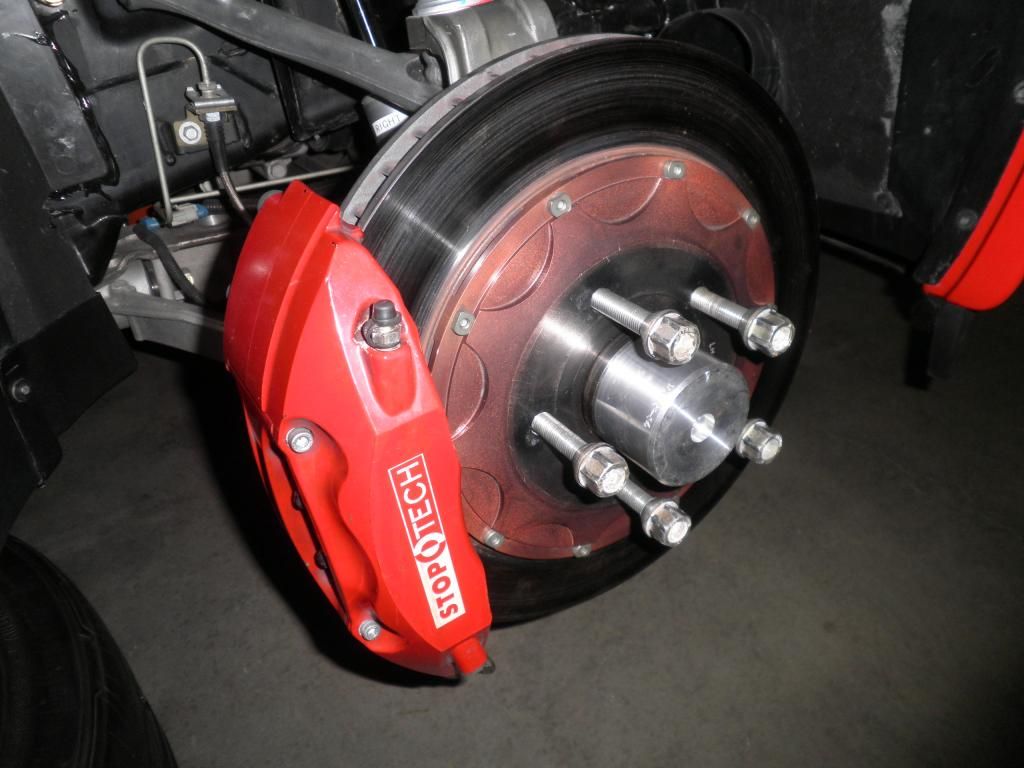
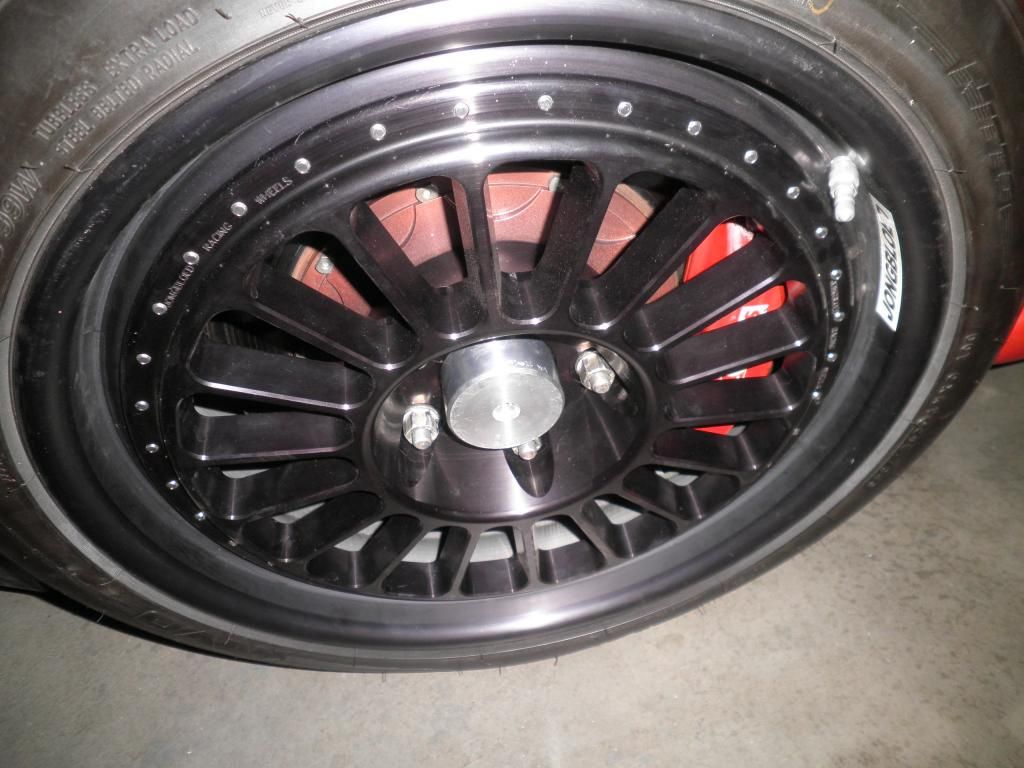
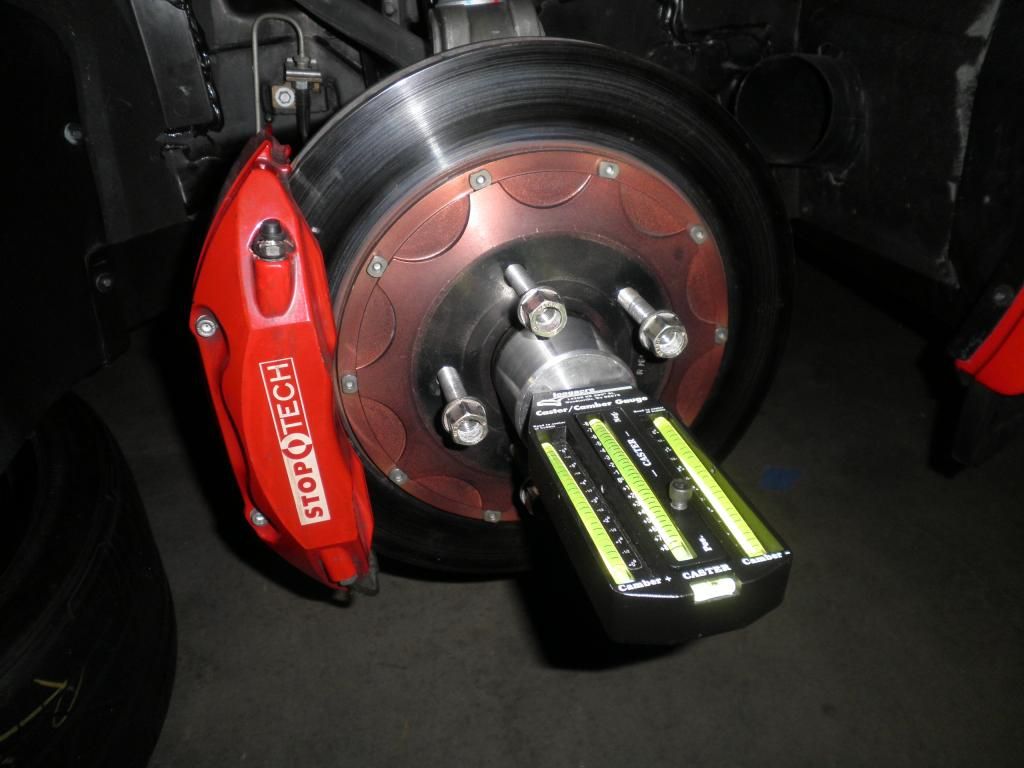








Last edited by trackboss; 11-05-2014 at 03:08 AM.
#138
Burning Brakes


Have a few questions…
Level side to side is important of course but if there’s a difference front to back, no biggy?
I have ¾” diff front to back but side to side is minimal in front only… so planning to only level sides. Think this is ok?
For settling the car during multiple adjustments I’ve decided to use floor tiles and salt assuming the low resistance would eliminate need to settle by movement. Thoughts?
Level side to side is important of course but if there’s a difference front to back, no biggy?
I have ¾” diff front to back but side to side is minimal in front only… so planning to only level sides. Think this is ok?
For settling the car during multiple adjustments I’ve decided to use floor tiles and salt assuming the low resistance would eliminate need to settle by movement. Thoughts?
#139
Race Director


Have a few questions…
Level side to side is important of course but if there’s a difference front to back, no biggy?
I have ¾” diff front to back but side to side is minimal in front only… so planning to only level sides. Think this is ok?
For settling the car during multiple adjustments I’ve decided to use floor tiles and salt assuming the low resistance would eliminate need to settle by movement. Thoughts?
Level side to side is important of course but if there’s a difference front to back, no biggy?
I have ¾” diff front to back but side to side is minimal in front only… so planning to only level sides. Think this is ok?
For settling the car during multiple adjustments I’ve decided to use floor tiles and salt assuming the low resistance would eliminate need to settle by movement. Thoughts?

#140
I finally got around to setting my street alignment today. I started with -3.0 front camber and then set front camber to ~ -0.6 left and ~ -0.8 right with caster in the 7.5 range on the left and 9.5 on the right. This was with two 1 mm shims behind each front dog bone. I added half mm shims behind the left front dog bone and 1.5 mm shims behind the right side rear dog bone.
This brought camber to ~ -0.5 on the left and ~ -0.7 on the right. These changes toed the front tires out about 2.5 inches. I drove it around the block to settle the suspension at about 15 mph and the front of the car surged left and right without me turning the steering wheel.
Caster was around +9 on the left and +8.5 on the right.
I could try getting the caster closer but the camber is as low as I want to go on the left side and the only adjustments left to me will decrease negative camber. along with increasing caster.
Rear camber is -0.9 on the left and -1.0 on the right. I got this by adding 1 mm shims behind each left and right side dog bone.
Will set up the strings tomorrow and do toe/thrust adjustments.
While working on the car I noticed both left side tires were on the verge of cording. The outside edge was just starting to show the rubber curling off the edge in layers. Front tire was the worst and would have had cords showing in a few more hard turns. The rear tire was just starting and I could probably have gotten a session out of it before cording. That probably explains some of the handling issues I was having at VIR.
Bill
This brought camber to ~ -0.5 on the left and ~ -0.7 on the right. These changes toed the front tires out about 2.5 inches. I drove it around the block to settle the suspension at about 15 mph and the front of the car surged left and right without me turning the steering wheel.
Caster was around +9 on the left and +8.5 on the right.
I could try getting the caster closer but the camber is as low as I want to go on the left side and the only adjustments left to me will decrease negative camber. along with increasing caster.
Rear camber is -0.9 on the left and -1.0 on the right. I got this by adding 1 mm shims behind each left and right side dog bone.
Will set up the strings tomorrow and do toe/thrust adjustments.
While working on the car I noticed both left side tires were on the verge of cording. The outside edge was just starting to show the rubber curling off the edge in layers. Front tire was the worst and would have had cords showing in a few more hard turns. The rear tire was just starting and I could probably have gotten a session out of it before cording. That probably explains some of the handling issues I was having at VIR.
Bill








